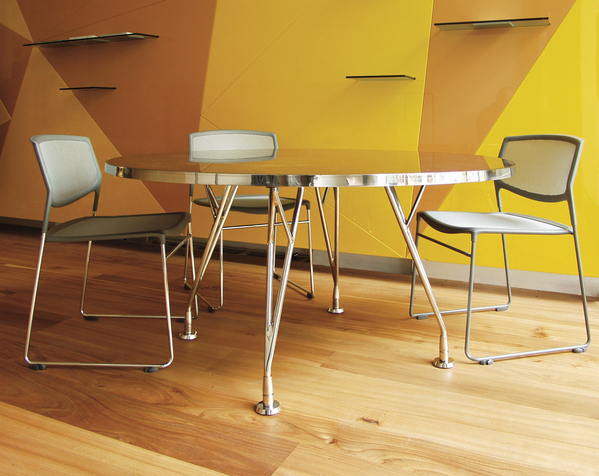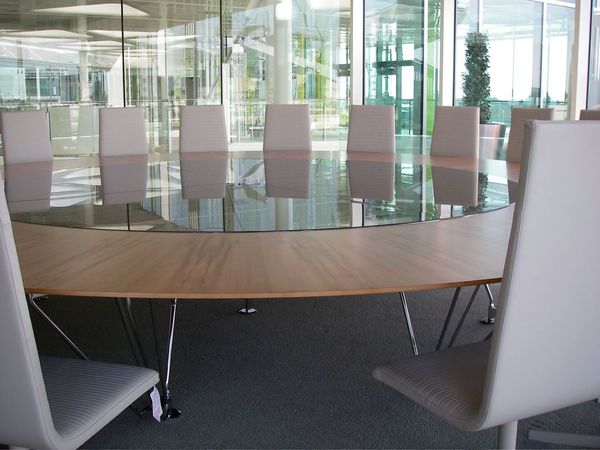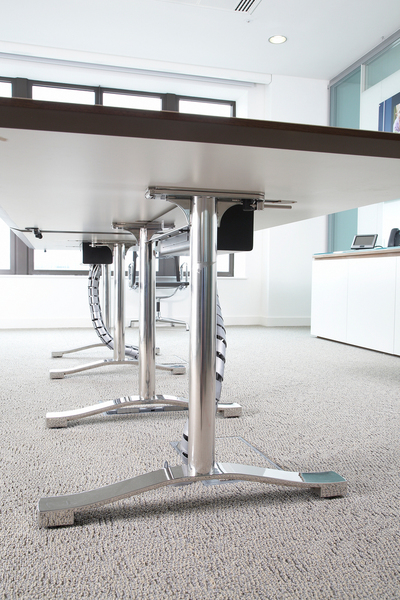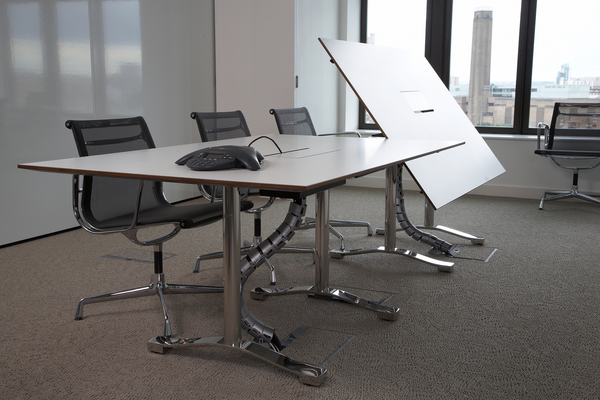Key to the development of both high end office designs was the office cable management capability, which had become a dominant element in all office desk or table design since the 1980s and which now, with better batteries and wireless internet, has become more or less obsolete.
Glass table and desk tops meant it was crucial to conceal or render the cable management invisible. But cabling kept having to be upgraded as CAT standards changed year-on-year. Each time ‘CAT 4’ became ‘CAT 5’, or ‘CAT 6’ changed to ‘6E’, all the cable had to be stripped out and replaced. If the furniture wasn’t structured to enable that, the client would have had to buy new tables or desks. We effectively future proofed the clients’ installation by factoring in the need for constant cabling upgrades.
With such projects, the key to success is designing out some of the on-site problems before the work actually arrives on site. People cost money, so the design makes for the absolute minimum of human input at the installation phase.
Fully office cable managed Curzon tables arrived as a kit of parts, assembled with an off-the-peg turnbuckle system that eliminated the need for any tools at all in assembly and radically reduced installation time on site. The work of the team at Luke Hughes is as much process design as it is product design. Installation and office cable management costs would amount to about the same as the table itself, but are a ‘blind cost’ that the client has to meet, whatever the surrounding circumstances.
Cable management or no, both the high end office furniture designs have stood the test of time.
Though the project has been in place for 10 years, it is still fresh, modern and clean. It hasn't dated. It’s looking like a real classic.
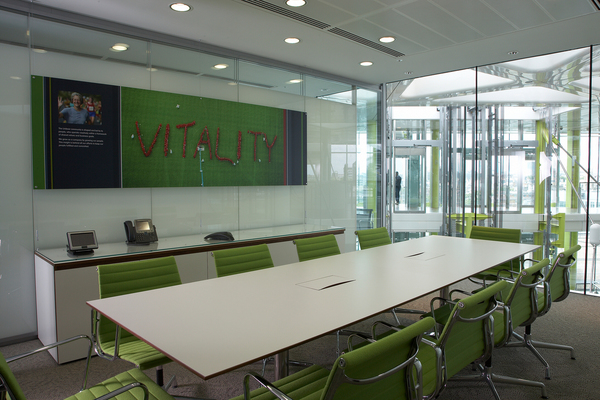
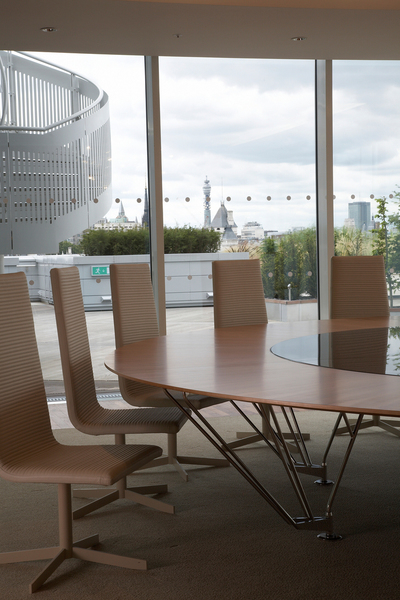
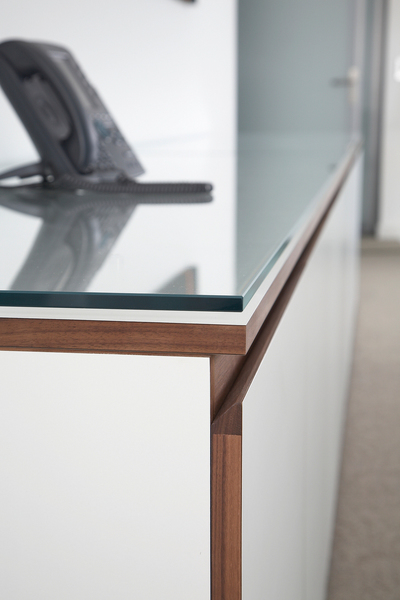
Enjoy the article? Delve deeper into Luke Hughes & Company’s place in the Arts and Crafts tradition with the fascinating new book 'Furniture in Architecture' . Available through Thames & Hudson

